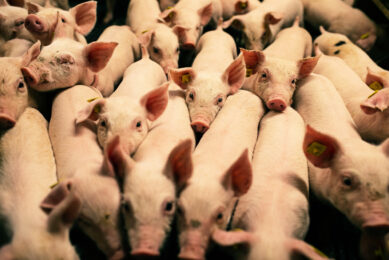Vitamin E for piglets – how much?
There is no doubt in my mind, vitamin E is a most potent vitamin, not only for efficient growth and reproduction but also for combating stress and disease. But, vitamin E is hardly a cheap vitamin to use without a second thought. It is indeed quite an expensive supplement, when used as such beyond and above normal requirements. So, how much do we really need to add in piglet diets?
The values recommended by the National Research Council (1998) should be taken of course as the absolute minimum, suitable for pigs of good health raised under good conditions. Here, I refrain from using the typical word ‘ideal’ because even in academia, tests are conducted far from ideal conditions. So, the NRC values for 10-kg piglets set at 16 IU per kg complete feed should be our lower end. Not, that there are no commercial feeds and supporting premixes in the market supplying less than that, but for this discussion we shall focus on the upper end.
©
Now, for most practical conditions, levels supplied are usually around 50-80 IU per kg feed, which are quite in line with values recommended (not as requirements, but more correctly as dietary specifications) by the British Society of Animal Science in 2003. These values call for 80 IU for pigs at 10-kg body weight or less. Here, it should be noted that the upper limit supported by some nutritional suppliers reaches or even exceeds 250 IU per kg feed. However, this is not for the entire post-weaning period (say, 6 to 10 kg body weight), but rather for the first feed given right after weaning, which has a target body weight of between 5 and 7 kg. And, here is where the debate begins. Because, there is little scope to discuss which is the correct correct – 80 or 90 IU – when the range is limited. But, when we jump from 50 or less IU in one piglet feed (even creep feed!) to 300 IU for the same type of feed from another supplier, then we should start questioning the reasoning for such an expense.
©
It is widely known, among field nutritionists that extra levels of vitamin E tend to support higher
growth, better health, and reduced leg problems post-weaning. Of course, these anecdotal claims are not well documented in the scientific literature, but nevertheless, the practice continues and only abates when vitamin E becomes too expensive! I can attest I have found such ‘additive’ role for vitamin E to be quite true in some cases.
©
How do I formulate piglet feeds then? I have actually taken the middle road. I have been
formulating normal diets with 80 IU and high-quality diets with 120 IU. But, when it comes to
formulating a diet for a specific health problem, then I go up to 160 IU. So, three different levels for three different types of feed. And, of course, upon request I have also prepared formulas with lower levels, but not such that I would recommend without some hesitation or at least some instructions to avoid a negative feedback.
©
Do I believe lower levels would be just fine? Yes! Under most conditions piglets should not require such high levels, even those used by my approach of two-halves. But, when one prepares a formula to be used under a wide range of conditions, such as those formulas sold by piglet feed manufacturers, the safeguards against loses and increased requirements cannot be overlooked. It is the opposite when one formulates for a specific farm when conditions are more or less stable and well predicted. Then, under such favorable conditions I have used quite less vitamin E. So, how much vitamin E do you believe we should be supplying to weaned piglets?
©
©











